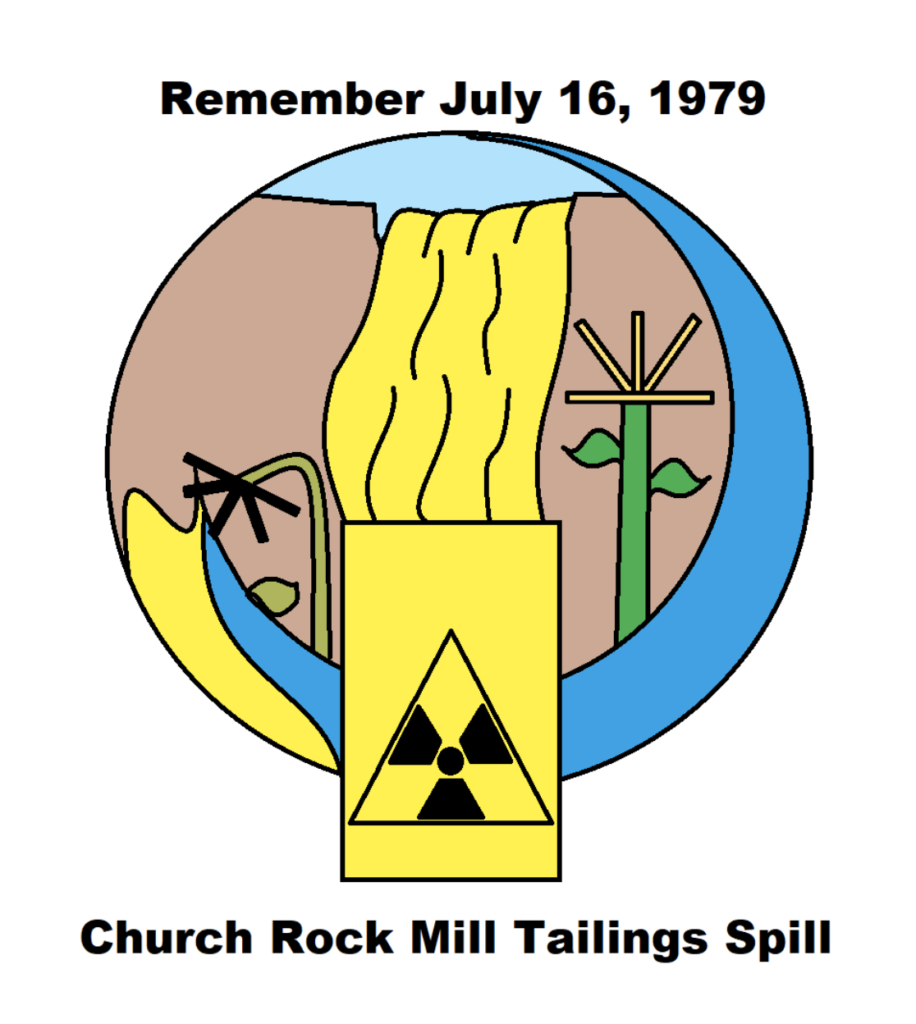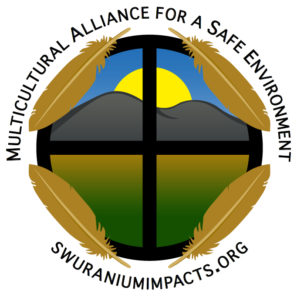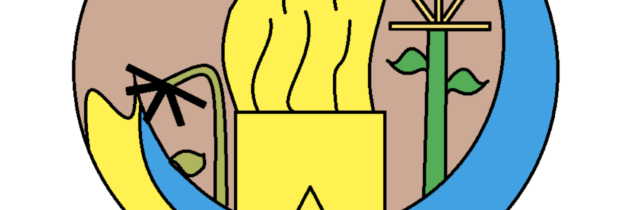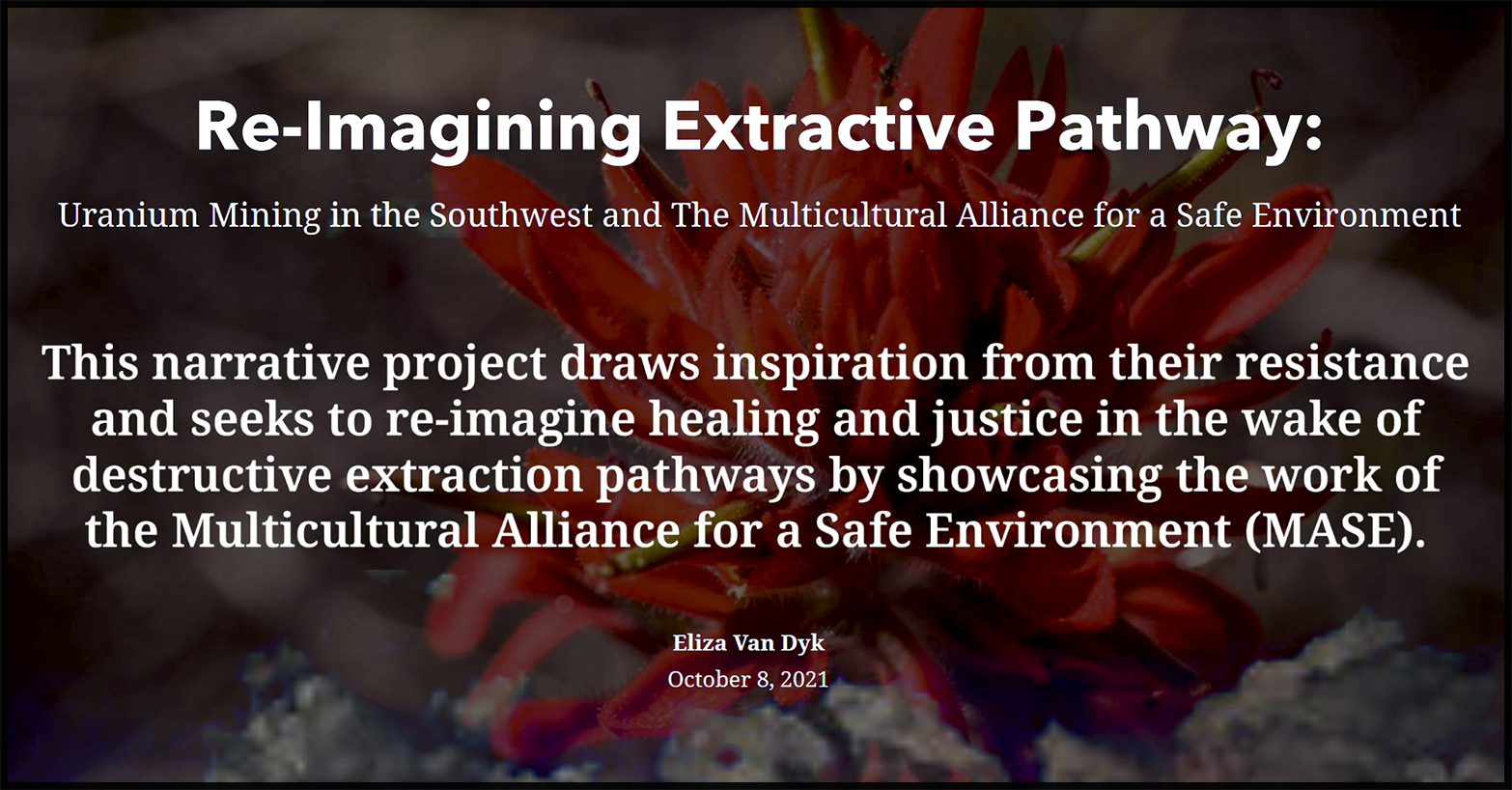Remembering the Church Rock Uranium Mill Tailings Spill of July 16, 1979
By Kirena Tsosie (keyclah@gmail.com)
and Chris Shuey (sric.chris@gmail.com) Southwest Research and Information Center
July 15, 2021
Every year at this time, the Red Water Pond Road Community Association (RWPRCA) of the Navajo Nation in northwestern New Mexico gathers to remember the impacts of the largest release of radioactive waste, by volume, in U.S. history. An estimated 94 million gallons of toxic uranium mill tailings wastewater spilled into the Puerco River from a breach in a dam at the United Nuclear Corp. (UNC) uranium mill on July 16, 1979.
RWPRCA families live between two abandoned uranium mines and the UNC mill and tailings facility in Coyote Canyon Chapter. To the south of them, the Northeast Church Rock (NECR) mine, located in Church Rock Chapter, operated from 1968 to 1982, producing about 3.5 million tons of uranium ore, making it one of the largest producing uranium mines on the Navajo Nation. The uranium ore from the NECR mine was processed at the adjacent UNC uranium mill, which is located in Pinedale Chapter. Mill tailings are the wastes left over from processing of uranium ore to extract uranium oxide, a metallic yellow powder. The tailings were stored in unlined evaporation ponds near the mill, causing localized groundwater contamination.
At 5:30 am on July 16, 1979, a 30-foot breach in the tailings dam opened, sending radioactive wastewater into the Puerco River. The spill fluids traveled more than 75 miles downstream into Arizona, passing through numerous Navajo communities and the city of Gallup, NM. The acidic wastewater (pH=1.5) was so toxic it caused burns on the feet and legs of livestock and some people who unknowingly waded into the stream immediately after the spill. Livestock and plants died alongside the banks of the Puerco River while elevated levels of uranium and radium were detected as far as 60 miles downstream. The Church Rock tailings spill ranks as the third largest radioactive waste release after the Fukushima disaster (2011) and the Chernobyl meltdown (1986), and larger than the Three Mile Island partial meltdown (1979).
Impacts of the spill were exacerbated by between nearly 30 years of dewatering of three large underground mines in the Church Rock mining district located 12 miles northwest of Gallup. Over the years, the mine water contributed nearly six times more radioactivity to the Puerco River system than the one-time tailings spill. Ongoing uranium contamination of alluvial groundwater has been documented in wells located near the Puerco River in the Sanders, AZ/New Lands region of the Navajo Nation. The role of the mine water in the contamination of the groundwater under the Puerco River is still being investigated some 50 years later.
Research has shown that Native Americans are disproportionately impacted by contamination of the land, water and air by mine wastes spread out over 15 Western states. RWPRCA and other grassroots communities on the Navajo Nation are holding corporations and the Federal Government responsible for the cleanup of abandoned uranium mines that date back to the beginning of uranium mining in the early 1940s. Native communities spanning three to four generations have had to live with the dangers of uranium waste affecting their families, their homes, their livelihoods and their sacred cultural practices.
On this day, we also remember the first atmospheric detonation of a nuclear weapon, called the Trinity Blast in the Tularosa Basin of south-central New Mexico on July 16, 1945. Like uranium miners of the Four Corners Area, the people of the Tularosa Basin continue to seek compensation for illnesses they connect to the Trinity Blast. The bomb, developed at Los Alamos National Laboratory during the Manhattan Project, paved the way for the atomic bombings of Hiroshima and Nagasaki, Japan, on August 6 and 9, 1945.
We remember these unconscionable and horrific events that shaped nuclear history over the past 80 years so that we don’t repeat them now and in the future. As the clock on the cover of the Bulletin of the Atomic Scientists reminds us, the world remains only 100 minutes from a cataclysmic nuclear exchange. Please, teach your children this history so they become the vanguards of peace and prosperity for future generations.
Click this link to download the article.
Original art work by Kieren Tsosie







